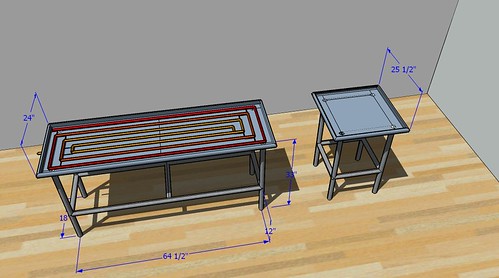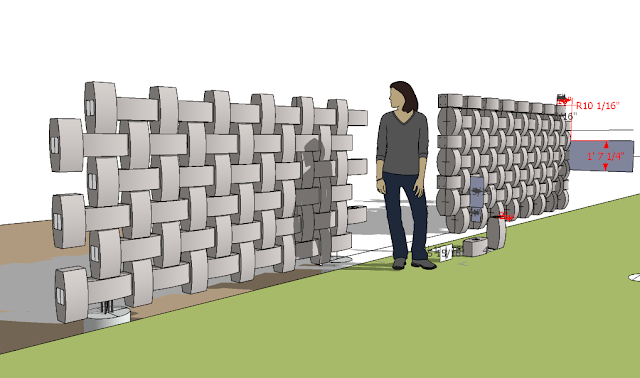Refinements to A Heated Table ~ Part Two
I've drawn a half-round edge on the table itself, moved the intake tube where it causes no obstruction hazard, entering from below. I've also drawn a smaller version for super-heated temperatures, having never before considered that someone working in encaustic might need something similar. (Thanks to one Ms. Stephanie Gerolimatos, and artist in this medium!) I still have only a vague understanding of the process, and no idea what ideal heater element could be placed inside. Possibly something solid-state electric with a variable control and a large metal plate.



here's what i'm thinking.
ReplyDeletethe setup i have now consists of a small electric grill with a Teflon surface that serves as a makeshift palette. encaustic starts to melt at around 160 degrees and working temp varies between roughly 170-220. i set everything (palette, brushes, heatgun, various tools and whatever matrix/matrixes i'm working on at one time on my drawing table which is maybe a 40 x 30" surface which though cramped, is functional for the time being.
what would probably be ideal is to have a large table (more like a counter really because then i could incorporate storage underneath) with a nonstick surface, one or two sections that heated up to serve as a palette and the rest of the non-heated surface for working space. non-heated because the encaustic process requires the melted wax to reset (cool) once on the matrix before being melted again to fuse layers and prevent the wax from shearing apart later. i suppose the heating elements for the palette would have to be electric unless there's a practical way to keep water that hot while circulating. (i can't think of one.)
the radiant heated table with the water pipes under the surface, would be a nice addition to a cold studio just for the sake of keeping warm. at times it could also be useful for keeping the temp of an encaustic work up a bit if you were working in a way that required the wax to stay soft and pliable. i can imagine instances where that would be useful. usually though, i need the wax to cool off quite a bit and at regular intervals during one working session.
if i tried either of these tables, the problems i can foresee in my current situation are due to the limits of my working space. i work in a sun room that's separated from the rest of the house with big heavy sliding glass doors. the basement doesn't extend under the studio so the nearest access to plumbing is across the dining room in either the kitchen or the bathroom. the electrical system here needs updating. right now, the system still runs on fuses and is set up poorly. it can't handle much juice and we have to be creative about where and when we draw power. after six years of living here, we've managed to decrease our fuse blowing significantly, but in order to heat my studio and work with encaustic at the same time, i have to do things like run extension cords from surge protected power strips outside the room. the up side to this is that by the time i'm able to actually build something like these tables and actually use them, the designs will no doubt be refined to the point of perfection. :)
right so, i think the smaller table, if powered by plugging in to an electrical outlet, has alot of potential as an addition to any encaustic artist's set up. it seems pretty flexible in terms of being fairly movable and as you mentioned, the fact that it could be built with angle iron and bolts would make it pretty affordable and simple to construct.
I had been wondering how you kept your colors from intermixing terribly, creating a muddy mess. It all makes sense! It's like flat sculpture, and ingenius!
ReplyDeleteor "engenius" in your time zone.
ReplyDelete